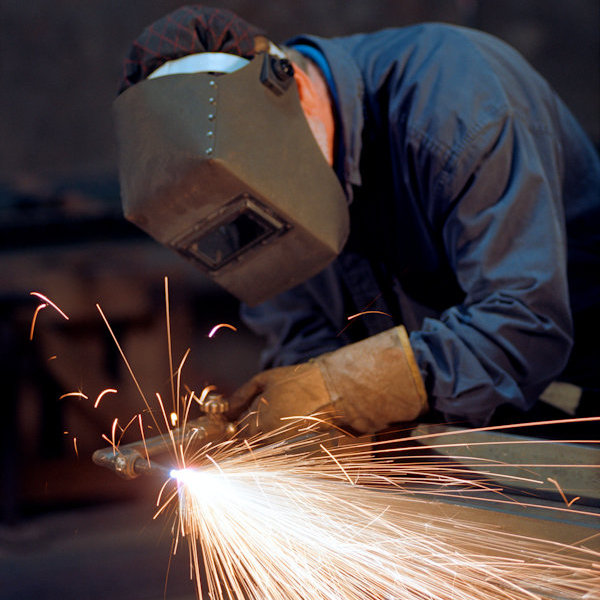Cutting, Welding, and Open-Flame Work
The Plan Administrator and affected employees should ensure the following:

Cutting and welding are done by authorized personnel in designated cutting and welding areas whenever possible.
- All necessary hot work permits have been obtained prior to work beginning.
- Cutting and welding are done by authorized personnel in designated cutting and welding areas whenever possible.
- Adequate ventilation is provided.
- Torches, regulators, pressure-reducing valves, and manifolds are UL listed or FM approved.
- Oxygen-fuel gas systems are equipped with listed and/or approved backflow valves and pressure-relief devices.
- Cutters, welders, and helpers are wearing eye protection and protective clothing as appropriate.
- Cutting or welding is prohibited in sprinklered areas while sprinkler protection is out of service.
- Cutting or welding is prohibited in areas where explosive atmospheres of gases, vapors, or dusts could develop from residues or accumulations in confined spaces.
- Cutting or welding is prohibited on metal walls, ceilings, or roofs built of combustible sandwich-type panel construction or having combustible covering.
- Confined spaces such as tanks are tested to ensure that the atmosphere is not more than ten percent of the lower flammable limit before cutting or welding in or on the tank.
- Small tanks, piping, or containers that cannot be entered are cleaned, purged, and tested before cutting or welding on them begins.
- Fire watch has been established.
Knowledge Check Choose the best answer for the question.
2-4. Which of the following situations would prohibit welding and open-flame work?
You forgot to answer the question!
